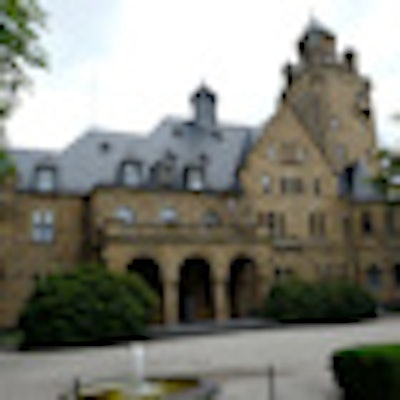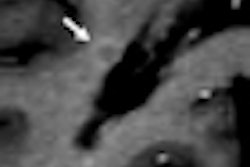
An ongoing research project aimed at routine implementation in late 2013 made it to the top ranks of the agenda at the DICOM KIS RIS PACS meeting, held near Mainz, Germany, last weekend. The project is financed by European Regions Funding (EFRE) and the Berlin Future Fund, and is organized by the Charité -- Universitätsmedizin Berlin and the care provider group Vivantes -- Netzwerk für Gesundheit, in conjunction with the IT start-up Ortec Medical.
"A lot of clinical research depends on the availability of case data or patients that match the study criteria," said Dr. Josef Schepers, from the Charité's Institute for Medical Informatics, who coordinates the project termed Berliner Forschungsplattform Gesundheit (BFG). "Finding those patients in a vast amount of data contained in hospital information systems [HIS] is often enough a tedious and time-consuming task, which puts a large number of studies at risk."
 Dr. Josef Schepers, Charité -- Universitätsmedizin Berlin, Institute for Medical Informatics. Image courtesy of Waldthausen.
Dr. Josef Schepers, Charité -- Universitätsmedizin Berlin, Institute for Medical Informatics. Image courtesy of Waldthausen.
Many studies do not meet their recruitment targets simply because data are not accessible on time. The BFG project is developing methods and tools to accelerate recruitment. HIS administrative information and data from lab information systems serve as sources of structured data; however, clinical routine as well as internal and external communication and documentation are mainly based on unstructured text documents. For example, radiologists sometimes tend to use lyrical language in interpreting images, according to Schepers.
Therefore, clinical documents including discharge letters and reports are also processed, analyzed linguistically, and tagged semantically to support matching. Physicians and study nurses can conveniently specify clinical studies and pertinent criteria using a Web application called StudyMatcher, which produces a list of cases matching these criteria, he noted.
"Specifying and matching of criteria are mutually dependent on the formal knowledge represented by medical ontologies, which are used during the semantic tagging of the clinical texts. That way, significant improvement in speed and reliability of the recruitment process can be expected," Schepers said.
Analysis of unstructured texts is challenging. Besides recognizing text structures such as parts of speech, phrases, and abbreviations, it is of importance to identify negations that are measured against a certainty model. Time correlations in a clinical path or patient history, as well as coreferencing of facts, also present challenges.
"The linguistic and semantic toolset consists of a framework which connects several specialized components to a linguistic pipeline," he explained. "Each component is responsible for a specific linguistic task and performs one or more algorithms to solve it. Negation recognition, for example, is delegated to a 'context feature' component which performs an adapted NegEx algorithm: lookup of trigger terms that reflect negation -- for example 'not,' 'no,' 'without.' The modification consists in an improved termination of the negated scope."
 The meeting venue, a castle near Mainz on the Rhine, enhances the exclusive community-type atmosphere of DICOM KIS RIS PACS.
The meeting venue, a castle near Mainz on the Rhine, enhances the exclusive community-type atmosphere of DICOM KIS RIS PACS.
Defining study criteria is a highly specific task that applies medical knowledge, but also a lot of attributable information such as time correlations, thresholds, and serial data. Availability of structured documentation tools for all steps of the clinical pathway would be a first significant achievement, and standardized text blocks in content editors would help, according to Schepers. The vision would be to "establish a system for criteria specification, or a specification language for criteria." Stringent use of language and embracement of standardized terminology, geared toward the capabilities of linguistic pipelines, would support analysis of unstructured texts in the future -- for the benefit of patients and the medical community.
DICOM KIS RIS PACS is an annual high-level meeting that has its roots in two conferences. One of its predecessors, the KIS RIS PACS Workshop ("KIS" is the German abbreviation for hospital information system), used to take place every year in a medieval castle near the quaint university town of Marburg. Today, this tradition continues near Mainz, in a castle built in medieval style back in 1910. Starting in 2007, that conference was integrated with the annual DICOM Meeting; today, the event ranks among Germany's top calendar items in imaging and informatics. The organizers are Mainz University Hospital and the Working Group Information Technology (@GIT) of the Association of German Radiologists.
The conference addresses radiologists, PACS administrators, chief information officers, and specialists in informatics. A preconference workshop tackles management and technology issues relevant to CEOs. Speakers and audience include well-known players in the field in the German-speaking region.
Topics range from research to clinical application, and include image processing and 3D, as well as compression, standards and interoperability, workflow, telemedicine, integration of pathology, mobility, new trends in reporting, and data mining in medical information.



















